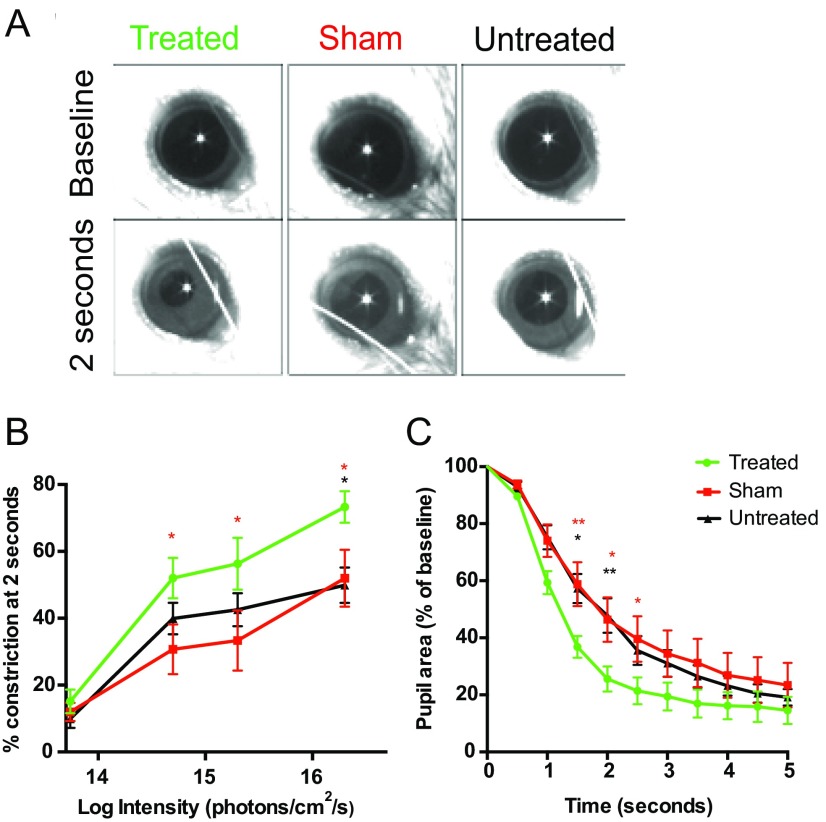Fig. S5.
Pupil constriction is greater in rd1 mice treated with OPN4 vector 2 mo previously compared with controls. The consensual pupil light reflex (PLR) was assessed following stimulation of the left eye using a white-light stimulus of 2-s duration. Representative images of pupil size at baseline and at 2 s after light onset are shown for eyes treated by OPN4 vector, sham-injected, and untreated controls (A). Irradiance response curves were generated following analysis of pupil constriction at 2 s after light onset. This early time point was chosen to help distinguish any response seen from the contribution of ipRGCs to the PLR, the latter contributing most to the sustained pupil constriction that occurs following light offset. Irradiance response curves demonstrate greater pupil constriction in the OPN4 vector-treated group (green) compared with sham-injected (red) and untreated controls (black) at multiple light intensities [B; effect of treatment (P = 0.04) and light intensity (P < 0.0001) on pupil constriction, repeated-measures two-way ANOVA with Tukey post hoc test]. Pupil constriction at 2 × 1016 photons⋅cm−2⋅s−1 was also faster in the treated group compared with controls (C; P = 0.0009, interaction between treatment and time on pupil area, repeated-measures two-way ANOVA with Tukey post hoc test). Treated, n = 10; sham, n = 9; untreated, n = 12; *(red) denotes significance between treated and sham, and *(black) between treated and untreated; *P < 0.05, **P < 0.01.

